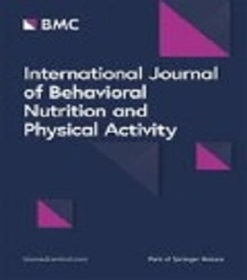社区集体运动参与与全因、心血管疾病和癌症死亡率:一项为期 7 年的纵向研究
IF 5.6
1区 医学
Q1 NUTRITION & DIETETICS
International Journal of Behavioral Nutrition and Physical Activity
Pub Date : 2024-04-24
DOI:10.1186/s12966-024-01592-9
引用次数: 0
摘要
社区层面的集体运动参与是社会资本的一个结构性方面,有可能对个人健康产生环境影响。本研究旨在调查社区层面的集体运动参与率与老年人全因、心血管疾病(CVD)和癌症死亡风险之间的背景关系。在这项为期 7 年的纵向队列研究中,使用了日本老年学评估研究的数据,该研究是一项全国性调查,涵盖了居住在 311 个社区的 43088 名功能独立的老年人。死因数据来自日本政府机构厚生劳动省,供二次使用。"参与 "的定义是每月参加集体运动一天或一天以上。在分析数据时,采用了两级生存分析法,并计算了危险比(HRs)和 95% 的置信区间(CIs)。在参与者中,有5711人(13.3%)死亡,其中1311人死于心血管疾病,2349人死于癌症。集体运动的平均参与率为 28.3%(范围为 10.0-52.7%)。在对个人层面的团体运动参与率和潜在的混杂因素进行调整后,发现社区层面的团体运动参与率越高,参与率每增加 10%,全因死亡(HR:0.89,95% CI:0.83-0.95)和癌症死亡(HR:0.89,95% CI:0.81-0.98)的风险就越低。就心血管疾病死亡率而言,在对所有协变量进行调整后的模型中,相关性变得不那么显著(HR:0.94,95% CI:0.82-1.09)。我们的研究结果表明,社区集体运动参与率与老年人全因死亡率和癌症死亡率之间存在预防关系。在社区内推广集体运动有望成为延长预期寿命的有效人口策略,无论个人是否参与这些集体运动。本文章由计算机程序翻译,如有差异,请以英文原文为准。
Community-level group sports participation and all-cause, cardiovascular disease, and cancer mortality: a 7-year longitudinal study
Community-level group sports participation is a structural aspect of social capital that can potentially impact individual health in a contextual manner. This study aimed to investigate contextual relationship between the community-level prevalence of group sports participation and the risk of all-cause, cardiovascular disease (CVD), and cancer mortality in older adults. In this 7-year longitudinal cohort study, data from the Japan Gerontological Evaluation Study, a nationwide survey encompassing 43,088 functionally independent older adults residing in 311 communities, were used. Cause of death data were derived from the Japanese governmental agency, The Ministry of Health, Labour and Welfare, for secondary use. “Participation” was defined as engaging in group sports for one or more days per month. To analyze the data, a two-level survival analysis was employed, and hazard ratios (HRs) and 95% confidence intervals (CIs) were calculated. Among the participants, 5,711 (13.3%) deaths were identified, with 1,311 related to CVD and 2,349 to cancer. The average group sports participation rate was 28.3% (range, 10.0–52.7%). After adjusting for individual-level group sports participation and potential confounders, a higher community-level group sports participation rate was found to be significantly associated with a lower risk of both all-cause mortality (HR: 0.89, 95% CI: 0.83–0.95) and cancer mortality (HR: 0.89, 95% CI: 0.81–0.98) for every 10% point increase in the participation rate. For CVD mortality, the association became less significant in the model adjusted for all covariates (HR: 0.94, 95% CI: 0.82–1.09). Our findings support the existence of a preventive relationship between community-level group sports participation and the occurrence of all-cause and cancer mortality among older individuals. Promoting group sports within communities holds promise as an effective population-based strategy for extending life expectancy, regardless of individual participation in these groups.
求助全文
通过发布文献求助,成功后即可免费获取论文全文。
去求助
来源期刊
CiteScore
13.80
自引率
3.40%
发文量
138
审稿时长
4-8 weeks
期刊介绍:
International Journal of Behavioral Nutrition and Physical Activity (IJBNPA) is an open access, peer-reviewed journal offering high quality articles, rapid publication and wide diffusion in the public domain.
IJBNPA is devoted to furthering the understanding of the behavioral aspects of diet and physical activity and is unique in its inclusion of multiple levels of analysis, including populations, groups and individuals and its inclusion of epidemiology, and behavioral, theoretical and measurement research areas.

 求助内容:
求助内容: 应助结果提醒方式:
应助结果提醒方式:


